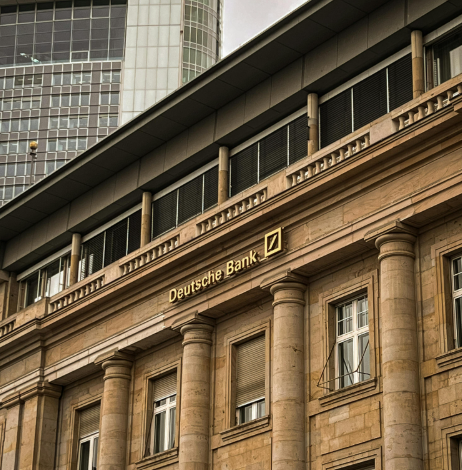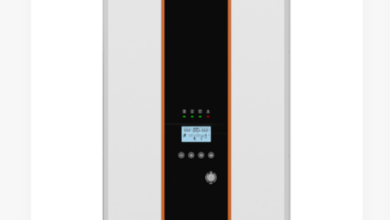Deutsche Bank Predicts Bitcoin in Central Bank Reserves by 2030

Deutsche Bank is one of the world’s leading investment companies. Their analysts have stated that Bitcoin will be a major part of central bank reserves by 2030.
Major financial institution Deutsche Bank has predicted that Bitcoin will soon be held alongside gold in many central bank reserves. It believes that, as countries respond to the weakening of the US Dollar and geopolitical concerns, Bitcoin will be a commonplace asset by 2030. Analysts for the bank stated that it is becoming more stable and trusted, similar to gold.
Rises in the Bitcoin Price
The value of Bitcoin continues to rise, and while still there, its volatility is at the lowest level in history. On Monday, October 8th, the Bitcoin price hit a record high of $126,069 before retracing to $120,748 the next day. It has since continued its upward trend towards its high spot. This has brought its 20-day moving average to 114,785.38, a gain of +9.76%. Analysts at the bank believe these patterns will improve even more, and soon the cryptocurrency will begin to resemble that of gold with the same behaviours.
Much of this price boom has been facilitated by a government shutdown in the United States. Binance noted that the key macroeconomic reports that investors were waiting for included the ISM PMI, Nonfarm Payrolls, and a joint SEC–CFTC roundtable on regulatory coordination, which could have helped shape market sentiment. These will not arrive, and with people investing in the dark, they also highlighted how, despite the U.S. government shutdown, the total crypto market cap recovered to over US$4T, with Bitcoin and Ethereum both rising about 4–5% and outperforming traditional equities.
Key assets highlighted by Deutsche Bank that both gold and Bitcoin share are a limited supply, low correlation to other markets, and increasingly, a method of hedging against inflation. The bank also highlights how the foremost global currency, the dollar, has declined in global reserves from 60% at the start of the millennium to 41% in the space of 25 years. Behind this has been a surge in central bank gold buying, which has seen the price of gold rise to $4,000.
Changing Global Currencies
Deutsche Bank also noted how a rise like this has not been seen since 1979. This was when they spiked +127% due to a surge in inflation after the oil crisis. However, if it is a crisis, stock markets have not reacted, with the S&P up 14.6% this year.
This has been epitomized by many of the major world economies, including China, India, Brazil, and Turkey. Many have reassessed their penchant for the US dollar, with worry that changes in politics and economics could harm their assets. Gold has been the main target for replacing this, with a 50% increase since the start of the year. Goldman Sachs has now raised their assessment for it to hit $4,900 per ounce by the end of the year.
Another factor in this has been the institutional adoption of Bitcoin. The US has turned into a much more crypto-friendly country, with a U.S. Executive Order to establish a Strategic Bitcoin Reserve. This has been echoed by many of its states, albeit with variations about funding and execution.
Following suit has been the corporate adoption of Bitcoin and other cryptocurrencies. Following in the footsteps of Michael Saylor’s Strategy, many have begun to amass crypto as part of their reserves. This has obviously been a benefit as prices have risen, adding value to companies that may have previously been struggling.
Is Bitcoin Still Too Volatile?
Some still believe Bitcoin is too risky an asset. This is because it has no value other than speculative, is not a physical asset, and is not backed by anything. It is a piece of code, and does not provide any reward like cash, property, or bonds would do.
This may account for the surge in demand for stablecoins, especially after the US introduced the GENIUS Act. This stated that any stablecoins produced must be backed 1:1 with an equivalent asset, like the US dollar. Binance noted how this led to a surge in the coin USDe. Its supply grew 43.5% in August to US$12.2B, capturing 4% of the stablecoin market. It became the fastest asset to surpass US$10B, reaching the milestone in 536 days versus USDC’s 903 and USDT’s 2000+. Yield-bearing models are building a lasting market advantage.
Deutsche Bank also added that much of this criticism is viable. However, they see further decline in its volatility as trading volumes increase. They believe this is what has made it a viable asset over the last few years. If this holds true, then a further tightening of geopolitical tensions and global economies could place even more value on Bitcoin. Paying attention ot current events could be more beneficial than looking at other movements in the crypto market over the next few years.



